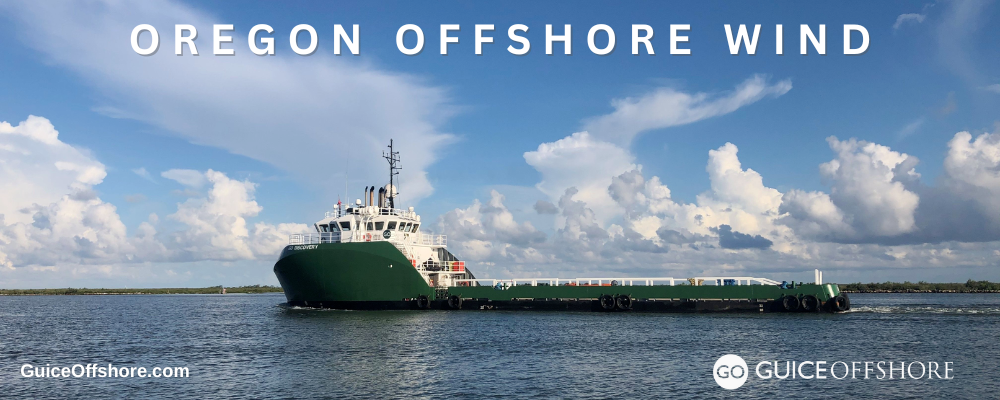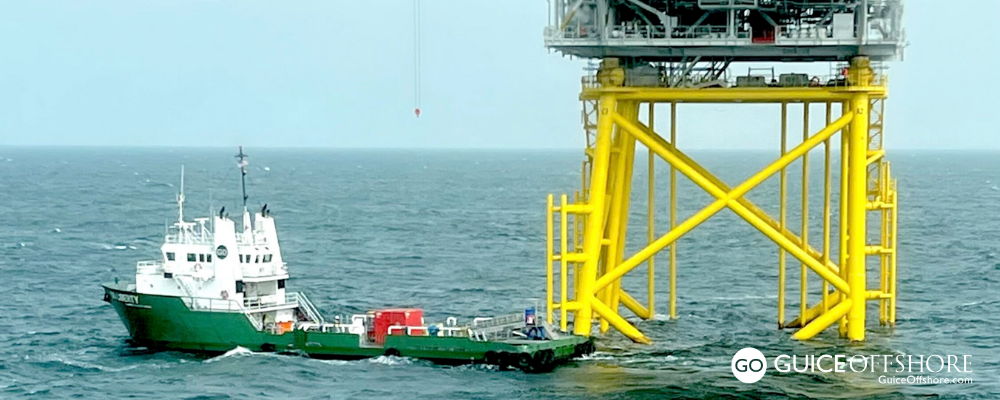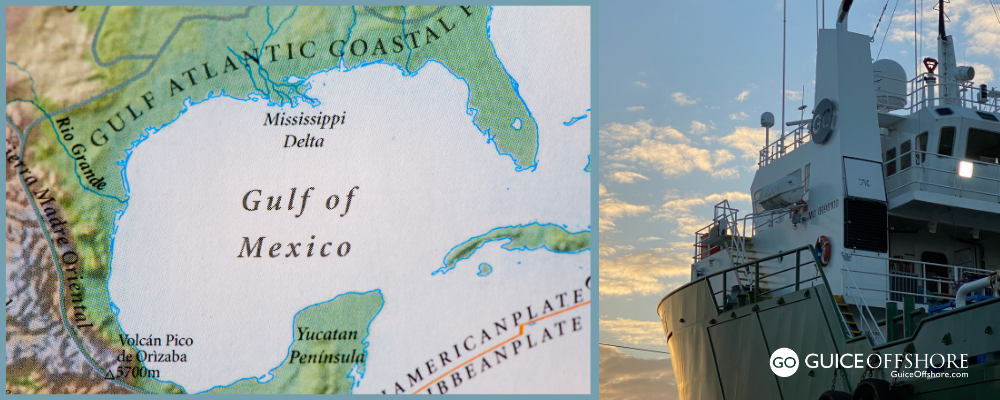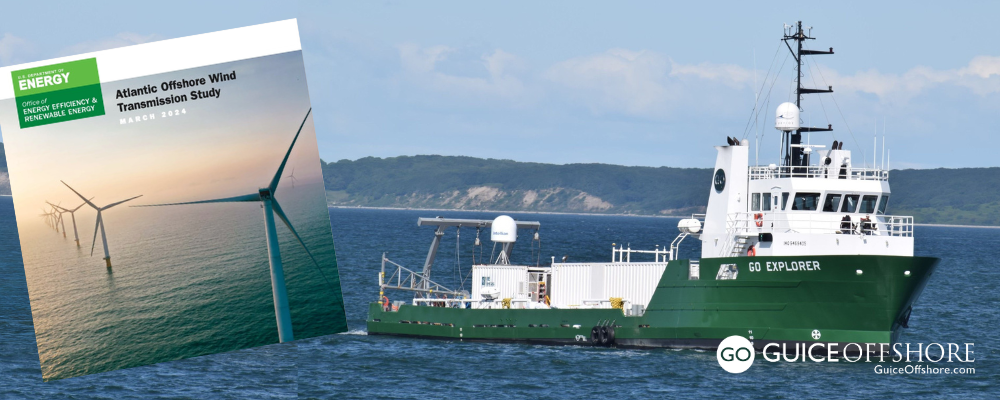Following the successful offshore wind projects already in motion on the Atlantic coast, on August 15, 2023, the U.S. Bureau of Ocean Energy Management (BOEM) announced that it has identified two draft Wind Energy Areas (WEAs) off the coast of Oregon and opened a 60-day public review and comment period on those WEAs.
Oregon presents major opportunities for offshore wind deployment, which will create good-paying jobs and new economic activity. Due to the deep waters off of Oregon’s coast, these areas are also an opportunity to accelerate U.S. leadership in floating technologies.
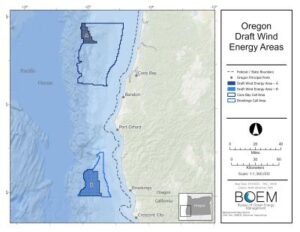 The draft WEAs cover approximately 219,568 acres offshore southern Oregon with their closest points ranging from approximately 18 – 32 miles off the coast. A map of the draft WEAs can be found on Oregon state activities page.
The draft WEAs cover approximately 219,568 acres offshore southern Oregon with their closest points ranging from approximately 18 – 32 miles off the coast. A map of the draft WEAs can be found on Oregon state activities page.
The Call Area is located offshore the State of Oregon and comprises areas identified as Coos Bay and Brookings. These two areas total about 1,159,298 acres (1,811 square miles) and are located offshore south-central and southern Oregon, respectively.
- Coos Bay Call Area: The boundary of the Coos Bay Call Area begins 13.8 miles offshore Charleston, Oregon, and extends to about 65 miles offshore. The eastern boundary water depth ranges from about 394 to 722 feet (120 to 220 meters). The area is about 67 miles in length from north to south and about 41 miles in width from east to west. The entire area is approximately 872,854 acres (1,364 square miles).
- Brookings Call Area: The boundary of the Brookings Call area begins 13.8 miles offshore Gold Beach and Brookings, Oregon, and extends to about 46 miles offshore. The eastern boundary water depth ranges from about 410 to 1,115 feet (125 to 340 meters). The area is about 46 miles in length from north to south and about 22 miles in width from east to west. The entire area is approximately 286,444 acres (448 square miles).
“As BOEM works to identify potential areas for offshore wind development, we continue to prioritize a robust and transparent process, including ongoing engagement with Tribal governments, agency partners, the fishing community, and other ocean users,” said BOEM Director Elizabeth Klein. “At the request of Oregon’s governor and other state officials, there will be a 60-day public comment period on the draft WEAs and BOEM will hold an intergovernmental task force meeting in addition to public meetings during the comment period. We look forward to working with the state to help us finalize offshore areas that have strong resource potential and the fewest environmental and user conflicts.”
The draft WEAs announced would tap up to 2.6 GW of Oregon’s potential.
To identify the draft WEAs, BOEM used a comprehensive process that involved outreach to potentially impacted stakeholders and ocean users, Tribes, and the public to identify the potential offshore locations that appear most suitable for floating offshore wind energy development and took into consideration possible impacts to local coastal and marine resources and ocean users. BOEM collaborated with the National Oceanic and Atmospheric Administration’s National Centers for Coastal Ocean Science to use an ocean planning model that seeks to identify and minimize conflicts.
The two draft WEAs reflect changes based on public, stakeholder, and interagency engagement from the Oregon Call Area that the Department of the Interior released for public comment in April 2022. Public input from this new comment period will be considered before formally designating final WEAs off the coast of Oregon.
Public Meetings and Comments
During the 60-day public comment period starting on August 15, 2023, BOEM will hold public meetings to outline data and information used to inform the draft WEAs and to discuss next steps. The meetings will be open to the public, with one specifically designed for engaging the fishing community. BOEM will also convene an Oregon Intergovernmental Renewable Energy Task Force meeting to discuss the draft WEAs and next steps in offshore wind energy planning in Oregon. Additional information on the webinars will be available on the BOEM Oregon state activities page.
To comment on the draft WEAs please go to regulations.gov and search for docket number BOEM-2023-0033. BOEM will accept comments through 11:59 pm ET on October 16, 2023.
About the BOEM
The U.S. Department of the Interior’s Bureau of Ocean Energy Management (BOEM) is responsible for America’s offshore energy and mineral resources. The bureau promotes energy independence, environmental protection and economic development through responsible, science-based management of energy and mineral resources on the U.S. Outer Continental Shelf.
Guice Offshore Has the Jones Act-Compliant Supply, Support and Platform Vessels To Help Meet Oregon Offshore Wind Goals
Guice Offshore’s growing fleet of Jones Act-compliant, dynamically positioned offshore supply vessels, mini supply vessels and platform vessels is well positioned to help meet our nation’s wind energy infrastructure installation and service goal deadlines, whether it’s crew transfer, service, cable laying, subsea work like scour protection or equipment transportation.
Guice Offshore vessels are well-maintained, well-manned and feature ample accommodations and sought-after equipment such as A-frames, cranes, winches, moonpools, deck sockets and essentials to facilitate a spectrum of highly specialized offshore projects.
We hold strategic partnerships throughout the United States, and maintain our highly capable vessels in accessible locations for quick response to myriad needs of the many specialty industries we serve like Offshore Wind.
Headquartered in Covington, Louisiana with its operations base in Lafayette, Louisiana and a northeastern Rhode Island office, Guice Offshore operates a 15-vessel fleet of U.S. Flag offshore vessels that includes Jones Act-compliant mini supply, multi-purpose and platform vessels in the 150-ft, 170-ft and 205-ft class with DP1 and DP2 certifications.
Guice Offshore operates from coast to coast in North America and select international locales.
Additionally, our subsidiary, GO Marine Services, a catering and offshore labor contractor, supports mission requirements that help minimize mobilization time and expense for Guice Offshore customers with special services like marine riggers, roustabouts and certified protected species observers in compliance with marine mammal regulatory requirements.
For charter inquiries, please contact David Scheyd at david.scheyd@guiceoffshore.com or (985) 273-2769
